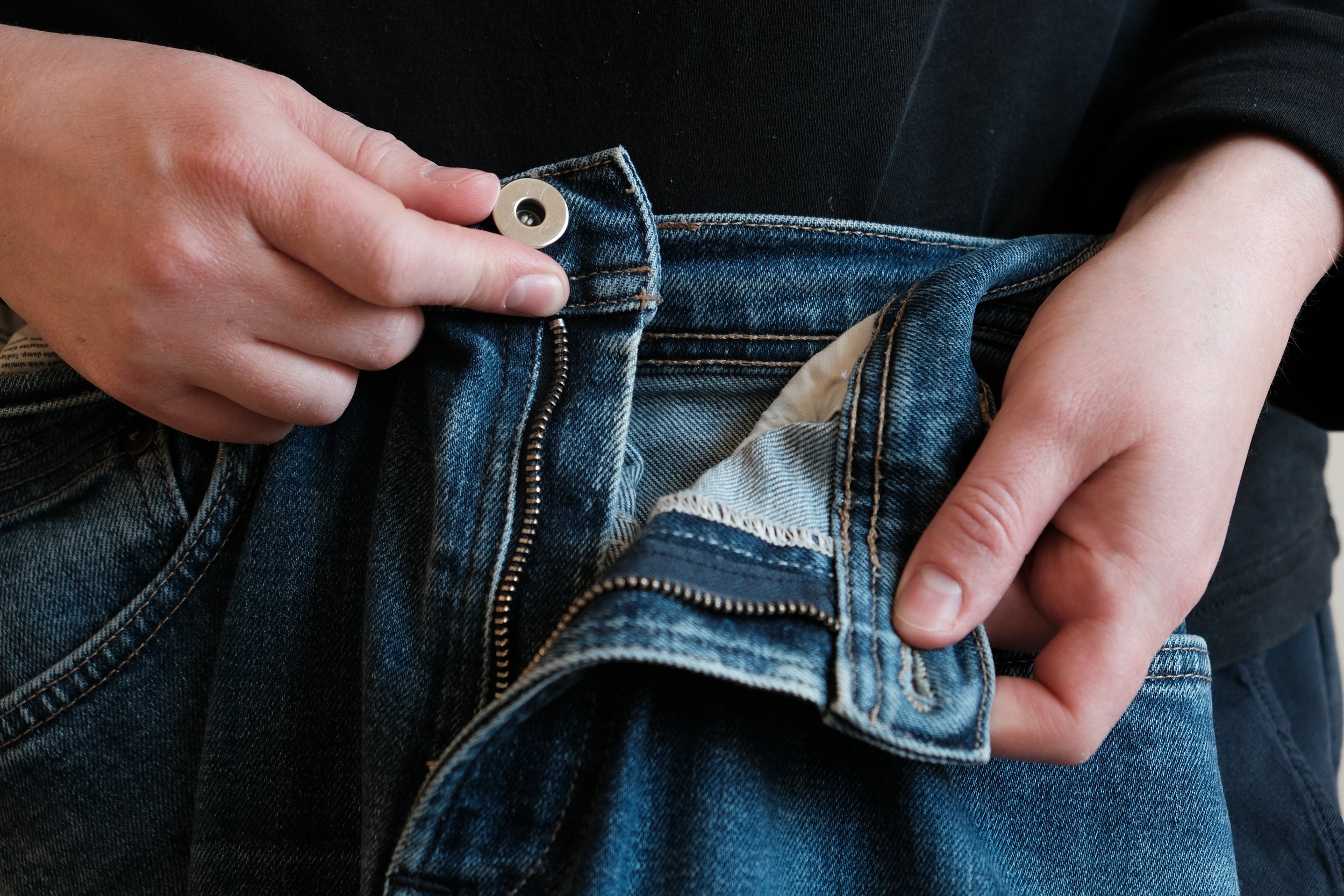Herman & the cashmere sweater
the motivation for my research
“I want it to feel like this!”
In November 2019 I was introduced to Herman, a teenage boy on the autism spectrum. Herman’s mother invited me to spend time in their family home to test some 3D knitted textiles that I was developing. As I laid out early prototypes for testing, she commented that Herman probably wouldn’t like them because the materials are quite rough. She explained that he only likes very soft fabrics, describing how the wrong sensory input can be very overwhelming for Herman, causing great anxiety that hinders his ability to do everyday tasks.
Indeed, Herman’s physical repulsion with the prototypes was immediate. He screwed up his face and jumped back as he touched them and quickly pushed them over to his mother. The displeasure it caused was etched across his face. Herman left the room. Sometime later he returned and presented me with his mother’s cashmere sweater and told me “I want it to feel like this”. His eyes lit up as he pressed it against his cheek. He placed the sweater in my hands and encouraged me to feel how fine and soft it was. This moment completely shifted my research approach; both in mindset and methodology. Ultimately it also shifted the direction of the design project.
Over three visits to Herman’s home, I learned that he was in many ways a regular 13 year-old boy; he has a very high IQ, attends a local school and is part of the local swimming club. But Herman’s sensory profile is different to his classmates. He is extremely sensitive to textures, particularly food and textiles. He has never liked human touch. He has had to become resourceful in finding ways of accommodating his sensory issues but with clothing his options are limited. I noted that Herman only wore variations of a brushed cotton hoodie and jersey sweatpants each time I visited. Autism does not define Herman, but it does present challenges in his everyday life:
“I want to wear jeans. I try to wear them to get used to them because I want to wear the same things as my friends but they are just too stiff, I can’t relax. I only ever wear soft jogging bottoms. But look …I found some soft jogging bottoms with a denim print! ”
“Waterproof clothing is the worst, it’s not so much the textures in this case it’s a combination of things and when they all merge together … it’s so stiff to move in and it’s not breathable so I get sweaty. And the squeaking noise the fabric makes when I move …ahhh. Then I have to listen to the rain splashing on the fabric and the more I move and the more it rains the squeaking noise turns into a squelching noise and everything combined is just too much.”
I visited Herman’s home three times to collaborate on building a narrative around his everyday activities, his sensory experiences and his wardrobe preferences. We developed a very fluid dialogue through tangible objects. Herman would leave the room and return with clothing or other objects: a padded pillow, a stress-ball, a sheepskin rug, and even a dog. He would show me how he liked to use them for sensory stimulation; which elements worked for him and which didn’t. Herman was showing me how he wanted to communicate. Through the performative interaction with the objects he could express felt experiences that could not be articulated with words.
In the design development phase I presented Herman with a series of textile samples to review. Without any prompting, Herman started to touch them cautiously under his fingertips. If this initial interaction determined the sample was not irritating, he picked it up and squeezed it in his hands. Then he rubbed the samples over his arm. If he found it to be extremely pleasurable he would rub it along his cheek and smile. At times he picked up a sample, stretched it to watch how the material responded, attempting to explain what it was he liked or disliked about the material. When choosing his favourite sample he would narrow his selection by repeating the exercises, comparing samples in different hands. I observed the richness of information emanating from his body language and facial expressions. My interpretation of his ranking of samples, based on his bodily expressions, were then verified verbally by Herman.
This is the motivation for a 3-year practice based PhD that sets out to explore how the sensory engagement of people on the autism spectrum can inform fashion design practices.
This is an extract taken from a paper I presented at IFFTI 2021

